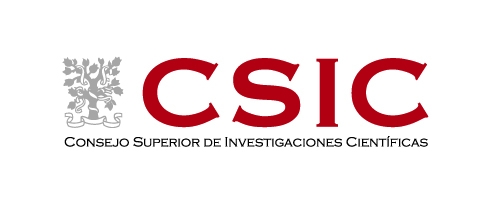- Details
- Category: general
|
|
||
- Details
- Category: general
|
||
- Details
- Category: general
| |
||
|
QUEJAS Y SUGERENCIAS
A través de este procedimiento podrán presentarse las quejas, iniciativas o sugerencias, que los ciudadanos estimen convenientes sobre el funcionamiento de las Unidades Administrativas de los Centros e Institutos pertenecientes a la Agencia Estatal CSIC.
FORMAS DE PRESENTACIÓN Las quejas y sugerencias pueden ser presentadas de las siguientes formas:
Las quejas o sugerencias presentadas por este canal seguirán luego el trámite ordinario hasta su resolución final. Quedará en poder del solicitante una copia en formato imprimible (PDF) de la instancia presentada. Esta copia incluye un número de solicitud que le permite identificar su escrito ante el CSIC.
CONTESTACIÓN Recibido el formulario, la Unidad responsable informará de la resolución de la queja en un plazo no superior a 20 días hábiles. El transcurso de dicho plazo se podrá suspender en el caso de que deba requerirse, en un plazo de 10 días hábiles, que se formulen las aclaraciones necesarias para su correcta tramitación. La comunicación se realizará, prioritariamente, por correo electrónico. En caso de incumplimiento el interesado puede dirigirse a la Inspección General de Servicios del Ministerio (Artículo 16.3 del RD 951/2005).
OBSERVACIONES Las quejas formuladas no tendrán en ningún caso la calificación de recurso administrativo ni su interposición paralizará los plazos establecidos en la normativa vigente. La presentación de una queja no condiciona, en modo alguno, el ejercicio de las restantes acciones o derechos que, de conformidad con la normativa reguladora de cada procedimiento, puedan ejercitar los que figuren en él como interesados. Del formulario de Quejas y Sugerencias que se incluye en este apartado, una vez pulsado, se podrán obtener tantas copias como se estime oportuno para su cumplimentación de forma manual.
NORMATIVA La normativa básica en la que se regulan los formularios de Quejas y Sugerencias se recoge en el Real Decreto 951/2005, de 29 de julio, por el que establece el marco general para la mejora de la calidad en la Administración General del Estado (BOE 3/9/2005 y Corrección 22/9/2005). |
||
| |
||
- Details
- Category: general
|
The National Institute of Physics and Chemistry (1932-1939) The Physics Research Laboratory, belonging to the Instituto Nacional de Ciencias Físico-Naturales (JAE), was created on April 7th, 1909, directed by Dr. Blas Cabrera, and located in the Palace of Industry and Fine Arts and sharing its headquarters with the Museum of Natural Sciences, Automation Laboratory (Leonardo Torres Quevedo), the School of Industrial Engineers and the Royal Society of Natural History. The Laboratory had four sections: Metrology, Electricity, Spectroscopy and Chemistry-Physics. "Paradigmatic is the inauguration, on February 6th, 1932, of the splendid National Institute of Physics and Chemistry, which came to replace the old Physics Research Laboratory (JAE). Built with the help of the International Educational Board of the Rockefeller Foundation, this Institute was a manifestation of the international success of the research of the physicists and chemists of the Board for the Extension of Studies (JAE), in fields such as Spectroscopy (Catalan) Magnetism (Cabrera), Chemistry -Physics (Moles) or X-ray Diffraction (Palacios)." [JM Sánchez Ron (1996):" Approach to the History of Contemporary Spanish Science", in The CSIC, Half a Century of Research, Madrid: CSIC, pp. 27]. "Between 1932 and 1936, there was not be enough room in the "Rockefeller" to receive all the students who wanted to come from the main European countries, sent by the most important scientists of international stature to learn, investigate, experiment and perform work for their doctoral theses under the leadership of Cabrera and the rest of the Section Heads, and the explanation was very clear: there was no research center in Europe with more modern and better equipped facilities, and with more experienced and ambicious teachers than in the Spanish Institute National of Physics and Chemistry of the JAE "... It had gone from" talking about science" to "doing science" at the European level and with the general recognition of the scientific community. [Fernández Terán, R. (2014) The Faculty of the "National Institute of Physics and Chemistry" before the Civil War, the Process of Depuration and the Drama of Exile. page 5 Madrid: Universidad Complutense, 2014.] The Institute, headed by Dr. Blas Cabrera, consisted of six sections: 1. Electricity Section, under the direction of Dr. B. Cabrera, with the collaboration of Dr. J. Torroja y G. Montaud. 2. Section of Roentgen Rays, under the direction of Dr. J. Palacios, with the collaboration of J. Garrido. 3. Spectroscopy Section, under the direction of Dr. M. A. Catalán. 4. Chemistry and Physics Section, under the direction of Dr. E. Moles, with the collaboration of Dr. M. Crespí. 5. Section of Organic Chemistry, under the direction of Dr. A. Madinaveitia, with the collaboration of Dr. A. González 6. Section of Electrochemistry, under the direction of Dr. J. Guzmán, with the collaboration of Dr. A. Sanabria. At the end Spanish Civil War (1939), the Junta para Ampliación de Estudios (JAE) and all of its research centres were replaced by the Consejo Superior de Investigaciones Científicas (CSIC). Two new research institutes were then sharing the Rockefeller building premises:
|
||
- Details
- Category: general
 |
||
|
Biblioteca Instituto Química-Física "Rocasolano" CSIC
Telf.: +34 915619700 Ext.: 1610 / 1660
|
||





